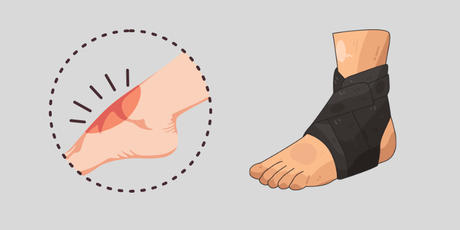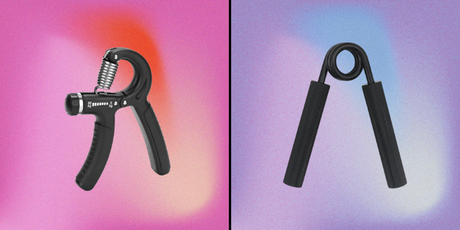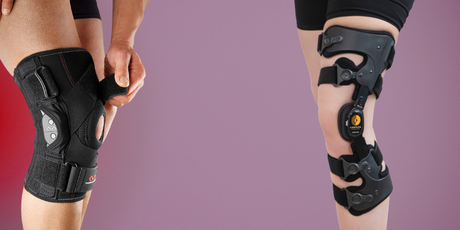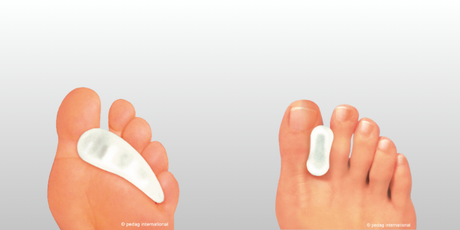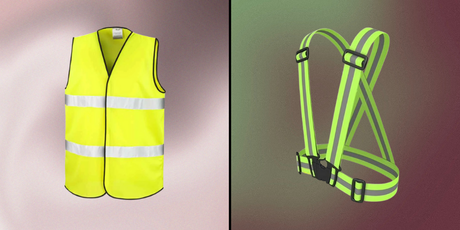Wondering how to use resistance bands to transform your fitness routine without breaking the bank? These large elastic or fabric bands can help build muscle, improve balance, and strengthen bones without heavy weights or expensive gym memberships.
These versatile fitness tools are lightweight enough to take on holiday and allow you to perform numerous exercises targeting different muscle groups with just a single band. When learning how to properly use resistance bands, beginners will appreciate how these simple tools can improve physical function and make everyday activities like carrying heavy items or climbing stairs significantly easier.
In this comprehensive guide, we'll walk you through everything you need to know about resistance band exercises for beginners. Furthermore, we'll cover how to use resistance bands at home effectively, ensuring you maintain proper form throughout your fitness journey. Let's get started with this accessible, affordable approach to strength training!
→ Once you’ve read the guide, check out our collection of resistance bands for everything you need to get started.
Why resistance bands are great for beginners
Resistance bands have evolved from rehabilitation tools in nursing homes to essential fitness equipment for people of all ages and abilities. Their rising popularity stems from practical benefits that make them particularly suitable for those just starting their fitness journey.
Affordable and portable
Cost remains a major barrier to fitness for many beginners, but resistance bands offer an economical solution. A quality set costs substantially less than other strength-training equipment. This affordability makes them an excellent entry point for newcomers hesitant to invest heavily in exercise gear.
Moreover, their lightweight, compressible design allows for unprecedented portability. Unlike traditional weights that remain fixed in one location, resistance bands easily fit into a travel bag, making them perfect companions for those with busy lifestyles. Whether you're in a hotel room, at the park, or working from home, these versatile tools travel wherever you go. This portability ensures that beginners can maintain consistent training routines regardless of location—a crucial factor for developing lasting fitness habits.
Safe for joints and muscles
For beginners, especially, safety during exercise proves paramount. Resistance bands provide controlled, scalable resistance that strengthens muscles while supporting joint health. Unlike free weights that can strain joints, bands deliver progressive resistance - meaning the further you stretch, the harder it gets. This gradually increasing tension reduces impact on joints while effectively building strength.
This gentle approach makes resistance bands particularly beneficial for those concerned about potential injuries when starting a fitness regimen. They offer a safer option to build strength because you're less likely to push your joints too far compared to using weight machines or dumbbells. Consequently, beginners can focus on perfecting their form rather than worrying about injury risks.
Ideal for home workouts
Resistance bands shine as the perfect solution for home-based exercise routines. Their space-efficient design makes them ideal for small living spaces where bulky equipment simply won't fit. Consider these advantages for home workouts:
- No setup required - They're ready to use immediately, with no complicated assembly or adjustments needed
- Multi-functional versatility - One band allows dozens of different exercises targeting various muscle groups
- Adaptability - You can instantly modify workouts by changing movements or adjusting resistance by shortening or lengthening the band
Essentially, resistance bands enable beginners to perform comprehensive strength training sessions without leaving home. Even during brief moments - like waiting for the kettle to boil - you can squeeze in strengthening exercises. This accessibility removes common barriers to regular exercise, such as gym anxiety or time constraints.
As you gradually strengthen your muscles with resistance bands, everyday tasks like pushing open doors or climbing stairs become easier. This functional improvement often provides beginners with tangible evidence of progress, helping maintain motivation during the critical early stages of a fitness journey.

How to choose the right resistance band
Selecting the correct resistance band is crucial for effective workouts and injury prevention. With various types, materials, and resistance levels available, understanding what to look for will help you maximise your training results.
Types of resistance bands
The fitness market offers several distinct resistance band varieties, each designed for specific purposes:
- Loop bands (also called superbands): These 40-inch rubber loops offer higher resistance, making them ideal for compound exercises like squats and chest presses. They're versatile for both upper and lower body workouts.
- Tube bands with handles: Featuring tubular elastic segments with carabiners or handles at each end, these bands excel at exercises you'd typically perform with dumbbells, including bicep curls and shoulder presses. They're particularly effective for lateral movements when anchored to a stationary object.
- Mini bands: Shorter, wider, and thinner than traditional loops, these bands provide lower resistance and work well for physical therapy and rehabilitation. They're excellent for activating glutes and stabilising movements.
- Figure-8 bands: These bands feature a unique design with soft handle grips, making certain exercises more comfortable to perform. They're primarily suited for upper-body workouts.
- Therapy bands: Designed specifically for rehabilitation purposes, these flat bands without handles typically offer less resistance to accommodate gentle exercises and mobility work.
→ Interested in getting started? Check out our collection of resistance bands for all needs and workouts.
Understanding resistance levels
Most resistance bands use colour coding to indicate tension levels, although there's no standardised system across manufacturers. Generally, the progression follows this pattern:
Yellow or light-coloured bands typically offer the lightest resistance (extra light), ideal for shoulder rehabilitation and gentle mobility exercises. Red bands usually indicate light resistance, perfect for beginners, warmups, and stretching. Green bands commonly represent medium resistance for general fitness and functional strength training, whilst blue bands often provide heavy resistance for larger muscle groups. Black or purple bands typically offer extra-heavy resistance suited for athletic use and muscle growth.
The resistance increases as you stretch the band - at minimum stretch, the band provides minimum tension; at maximum stretch, it delivers maximum tension. This variable resistance creates a unique training stimulus different from traditional weights.
Tips for beginners
If you're new to resistance training, begin with lighter resistance bands to master proper form before progressing to heavier options. This approach allows your body to adapt to the unique characteristics of band training without risking injury.
Consider your fitness goals when selecting bands. For improving flexibility and mobility, therapy bands with lighter resistance work best. For general toning and strength building, medium resistance bands provide sufficient challenge while allowing proper form.
Instead of purchasing a single band, invest in a small set with 2–3 different resistance levels. This allows you to use appropriate tension for different exercises and muscle groups—lighter bands for smaller muscles like shoulders and biceps, heavier bands for larger muscle groups like legs and chest.
Before committing to a purchase, test the bands if possible. Many fitness centres offer bands for rent or include them in trial classes. This hands-on experience helps you determine which resistance level feels challenging yet manageable for your current fitness level.

Getting started: How to use resistance bands at home
Once you've acquired your resistance bands, creating an effective home workout environment becomes your next step. With minimal equipment and space requirements, these versatile tools allow for comprehensive strength training in nearly any setting.
Setting up your space
First of all, select a comfortable area in your home that's free from obstacles. You'll need enough room to move freely with extended arms and legs. An ideal workout space should have:
- Clear floor area without furniture or tripping hazards
- Good lighting and ventilation
- A non-slip surface (preferably with an exercise mat)
- Storage solutions to keep bands organised
Depending on your exercises, you might need to secure your resistance bands to a fixed point. For door anchors, ensure the door closes securely after placing the anchor at the top. Wall-mounted anchors must be firmly attached and able to support the tension from your bands. Always verify the stability of anchor points before beginning your workout to prevent accidents or injuries.
Basic safety and breathing tips
Safety remains paramount whenever using resistance bands. As a result, always examine your bands before each workout for any small nicks, tears, or punctures that could cause breakage. Keep bands away from sharp objects, store them out of direct sunlight, and never overstretch them beyond 2.5 times their length.
Proper breathing technique enhances workout effectiveness yet is often overlooked. Follow this pattern during exercises:
- Inhale: Breathe in through your nose as you prepare or transition between repetitions
- Exhale: Breathe out during the effort phase (when pushing, pulling, or lifting against resistance)
For maximised benefits, consider extending your exhale phase while performing resistance exercises. This extended exhale boosts core muscle activation and enhances cardiovascular capacity. Once you've mastered basic breathing, advanced practitioners might explore "decompression breathing" for greater pressure management and core engagement.
To begin your resistance band workout safely, start all exercises slowly to ensure band strength. Avoid jerking movements that might cause band failure or injury.
Standing vs seated positions
Resistance bands offer remarkable versatility as you can perform nearly all exercises either standing up, sitting down, or a combination of both positions. Each position has distinct advantages:
Standing positions provide:
- Greater core engagement
- Enhanced balance development
- Opportunity for full-body integration
- More range of motion for certain exercises
Seated positions offer:
- More stability for beginners
- Less stress on the lower back
- Better control for precise movements
- Accessibility for those with mobility limitations
For seated band exercises, secure the band under your feet or around a sturdy furniture piece. In standing positions, step on the band with one or both feet depending on the desired tension.
When performing standing rows, position yourself 3-4 feet away from the anchor point with feet hip-width apart, maintaining proper posture with head straight and chest up. For seated exercises, ensure your chair is stable and won't slip during movement.
Regardless of position, always focus on maintaining proper form throughout each exercise. If you find it difficult to complete a movement with correct technique, switch to a band with less resistance until you master the form. Rest at least one day between training sessions to allow muscle recovery.
Full-body resistance band exercises for beginners
Now that you're ready with your bands, let's explore specific exercises targeting major muscle groups. These fundamental movements will help you build strength throughout your entire body.
Back: Pull-aparts and lat pull-downs
For pull-aparts, hold the band with both hands extended in front at shoulder height. Squeeze your shoulder blades together as you pull the band apart, keeping your arms straight. This targets your upper back muscles and improves posture. For lat pull-downs, secure your band to an overhead anchor. Grasp the ends and pull down towards your chest, focusing on using your back muscles rather than arms. This exercise strengthens the large "lat" muscles along your sides.
Shoulders: Dumb waiter and lateral raise
The dumb waiter exercise builds strength in crucial rotator cuff muscles. Sit or stand with feet hip-width apart, arms bent at 90 degrees by your side. Hold the band in both hands and move your forearms outward while keeping elbows tucked against your body. For lateral raises, stand on the middle of your band, holding each end in your hands. Raise your arms straight out to shoulder height, then slowly lower them. This primarily activates your lateral deltoids, often neglected yet vital for balanced shoulder strength.
Chest: Chest press
Place the band behind your back and hold the ends with both hands at chest level. Press forward until your arms are nearly straight, mimicking a traditional bench press. This exercise targets your pectoralis muscles, helping with pushing movements in daily activities. For added challenge, you can increase band tension by adjusting your grip position or using a heavier band.
Arms: Bicep curls and triceps extensions
For bicep curls, stand on the middle of your band and hold the ends in each hand. Keeping elbows close to your sides, curl your hands toward your shoulders. This strengthens muscles used for lifting. Triceps extensions target the back of your upper arms. Secure one end of the band under your foot and hold the other behind your back. Extend your arm upward, keeping your elbow close to your head. These exercises help with everyday pushing and pulling movements.
Legs: Leg press, abduction, and squats
Leg presses strengthen quads that help with stairs and standing. Sit with the band under one foot, holding the ends at waist level. Press your foot forward against the resistance. For abductions that improve hip stability, loop a band around both ankles and step sideways, keeping tension throughout. Squats build overall leg strength – stand on your band holding the ends at shoulders, then lower into a squat position, ensuring knees don't extend past toes. These exercises develop functional lower body strength for daily activities.
Tips to improve form and avoid mistakes
Perfecting your technique with resistance bands requires attention to detail and awareness of common pitfalls. Proper form ensures maximum benefits whilst preventing potential injuries.
Common form errors to watch for
Maintaining proper body alignment throughout each exercise is vital. Avoid allowing your body to slump or twist during movements, which diminishes effectiveness and increases strain risk. Many beginners use momentum instead of controlled movements—a mistake that reduces muscle engagement and may lead to injury. Similarly, improper anchoring can cause bands to snap unexpectedly. Always secure bands to stable anchor points and check their stability before beginning exercises.
How to adjust resistance safely
Regularly inspect your bands for signs of wear, cracks, or fraying. Replace damaged bands promptly to ensure safety. If you're struggling to complete exercises with proper form, simply switch to a band with less resistance. Never pull bands beyond their recommended stretch range—this can damage the band and potentially cause injury. Throughout your workout, focus on controlled, deliberate movements rather than rapid repetitions.
When to rest and how often to train
Leave at least one day between sessions so your muscles can recover properly. For beginners, aim for 2-3 weekly sessions targeting all major muscle groups. If you notice persistent soreness that doesn't improve with rest or experience decreased performance, these are signals to take additional recovery time. Listen to your body and adjust accordingly.
Conclusion
Resistance bands undoubtedly offer one of the most accessible pathways to strength training for beginners. Their combination of affordability, portability, and joint-friendly resistance makes them stand out from traditional fitness equipment. Additionally, these versatile tools allow effective workouts regardless of your location or space constraints.
Starting your fitness journey with resistance bands provides numerous advantages. First and foremost, you can target every major muscle group with just a few simple bands. The progressive resistance they offer builds functional strength that directly translates to easier daily activities like climbing stairs or lifting heavy items.
Remember to choose appropriate resistance levels for your fitness stage. Beginners should typically start with lighter bands to master proper form before progressing to heavier resistance. Above all, safety remains paramount – always check your bands for wear, maintain proper form, and give your body adequate rest between training sessions.
Your consistency with resistance band workouts will yield noticeable improvements in strength, balance, and overall fitness. Therefore, incorporate these exercises into your routine 2-3 times weekly, focusing on controlled movements rather than speed. The remarkable versatility of resistance bands means you can continually modify your workouts as you progress, ensuring they remain challenging and effective.
Resistance bands certainly deserve their growing popularity. They bridge the gap between rehabilitation tools and serious fitness equipment, making strength training accessible to everyone regardless of experience level, budget constraints, or training location. Armed with this comprehensive guide, you now have everything needed to begin your resistance band journey confidently and safely.




